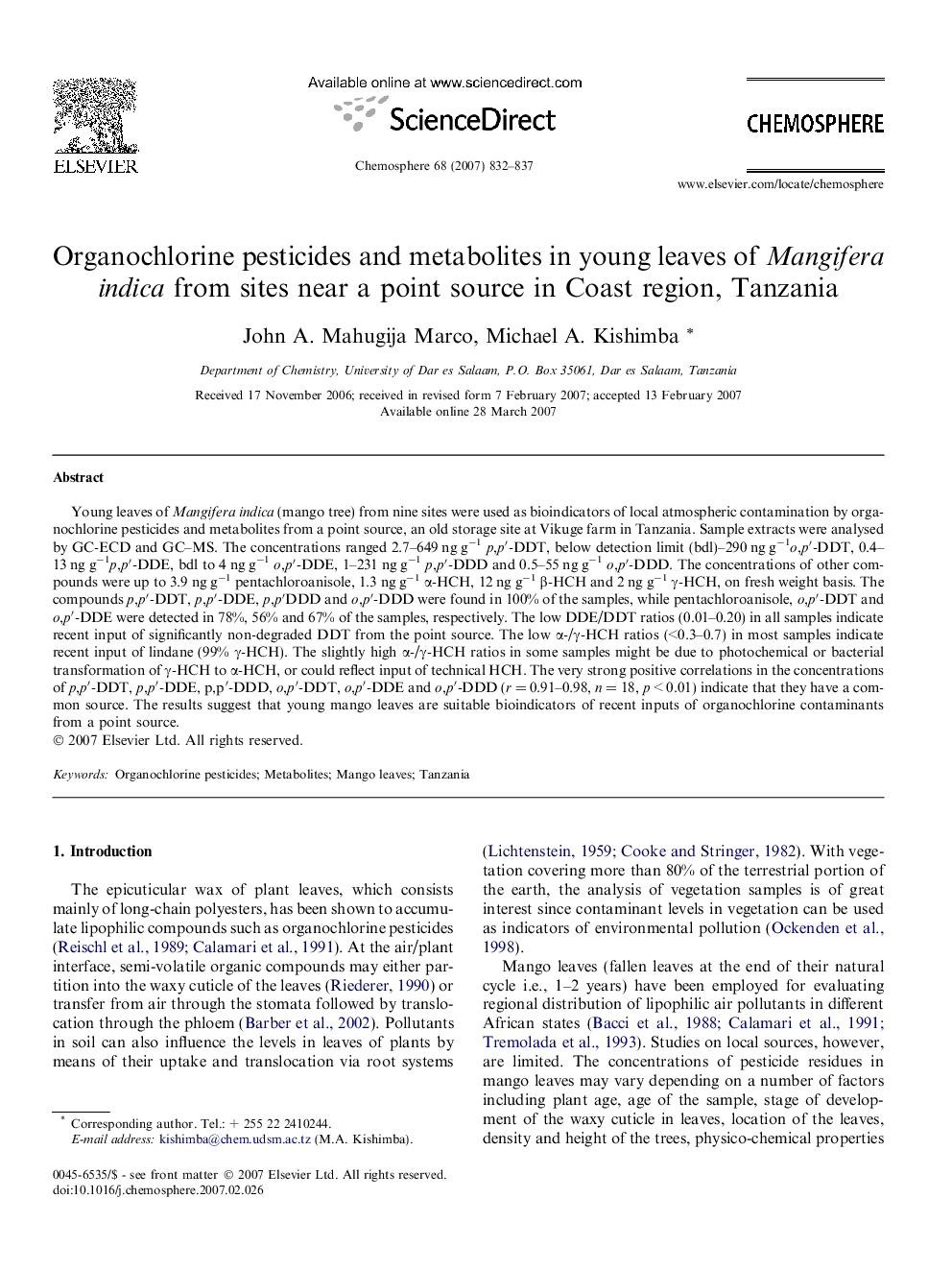| Article ID | Journal | Published Year | Pages | File Type |
|---|---|---|---|---|
| 4415438 | Chemosphere | 2007 | 6 Pages |
Young leaves of Mangifera indica (mango tree) from nine sites were used as bioindicators of local atmospheric contamination by organochlorine pesticides and metabolites from a point source, an old storage site at Vikuge farm in Tanzania. Sample extracts were analysed by GC-ECD and GC–MS. The concentrations ranged 2.7–649 ng g−1p,p′-DDT, below detection limit (bdl)–290 ng g−1o,p′-DDT, 0.4–13 ng g−1p,p′-DDE, bdl to 4 ng g−1o,p′-DDE, 1–231 ng g−1p,p′-DDD and 0.5–55 ng g−1o,p′-DDD. The concentrations of other compounds were up to 3.9 ng g−1 pentachloroanisole, 1.3 ng g−1 α-HCH, 12 ng g−1 β-HCH and 2 ng g−1 γ-HCH, on fresh weight basis. The compounds p,p′-DDT, p,p′-DDE, p,p′DDD and o,p′-DDD were found in 100% of the samples, while pentachloroanisole, o,p′-DDT and o,p′-DDE were detected in 78%, 56% and 67% of the samples, respectively. The low DDE/DDT ratios (0.01–0.20) in all samples indicate recent input of significantly non-degraded DDT from the point source. The low α-/γ-HCH ratios (<0.3–0.7) in most samples indicate recent input of lindane (99% γ-HCH). The slightly high α-/γ-HCH ratios in some samples might be due to photochemical or bacterial transformation of γ-HCH to α-HCH, or could reflect input of technical HCH. The very strong positive correlations in the concentrations of p,p′-DDT, p,p′-DDE, p,p′-DDD, o,p′-DDT, o,p′-DDE and o,p′-DDD (r = 0.91–0.98, n = 18, p < 0.01) indicate that they have a common source. The results suggest that young mango leaves are suitable bioindicators of recent inputs of organochlorine contaminants from a point source.
